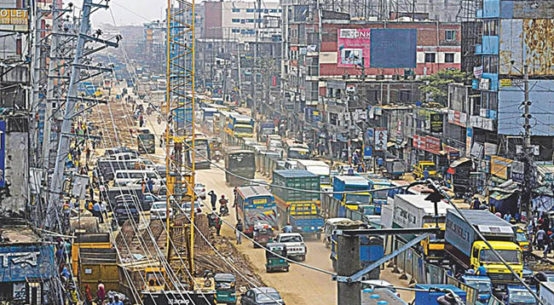The conflict in Barishal between the administration and the politicians –both close to the Government- has drawn public attention. It arose out of removing “garbage materials” but such a large-scale mayhem occurred that it required posting of BGB forces.
The immediate situation seems to have been managed for the moment and the top layer is claiming that all is fine now and the problems have been resolved. The Minister has said that it arose out of a misunderstanding and no one is troubled or threatened by the situation.
However, one can’t deny that there was trouble and caught everyone unawares. While the immediate cause may be linked to garbage removal, the reasons appear to be structural in nature and shows that being on the same side doesn’t mean differences in terms of power, capacity and muscle. The Barishal incident probably shows that this conflict is probably present elsewhere in Bangladesh.
The Media has called it an administration vs politicians in conflict story though both are part of the same government. This can always happen but the structural causes need more analysis. It’s not a stray incident but one that indicates how the ruling class layers are being positioned. What determines the status and by whom? How do they interact with each other and how does the power flow?
The ruling class has four overlapping layers. At the top is the armed forces who are aloof from the civilian governance process. As members of the UN Peacekeeping forces are significantly more resourced, institutionally and individually than the rest of the government servants. Their economics is UN payment based and not graft as is the case with many civilian amlas. No matter which regime comes, they are unchanged so no question about their status.
Next comes the money makers and they are somewhat dependent on all though as the engineers of crony capitalism they are the ones on whom most matters rest. The amlas come next as they are the facilitators of governance so they play a key role in its management. Finally at the bottom are the politicians who are now locked in a struggle with the amlas as both play similar governance related roles. It’s this overlap as the Barishal incident showed which is causing friction and has increased due to the Covid situation.
The administrative and economic structure of a state reflects its wheels of functioning. In other words what seems as acts or incidents in isolation as laid out in Western separation of powers theory doesn’t apply anymore or much more weakly now to many parts of the world. Colonial capital produced its own administrative structure, based on reciprocal loyalty, management of dissent and resistance, collaboration based cadre system and of course reward and punishment etc.. This is largely followed in India and Pakistan.
Bangladesh as the third state has crony /network capitalism and also needs the development of a new structure and tools with special focus on conflict avoidance and resolution for state management. While we can hope they won’t happen again, we can’t promise that it will not. It’s best that the state system produces its economic and governance system in greater and applicable details too.


